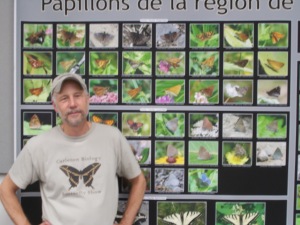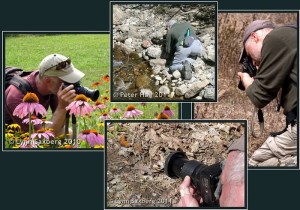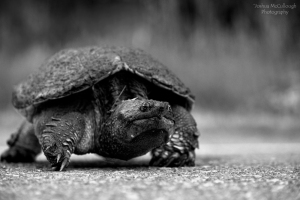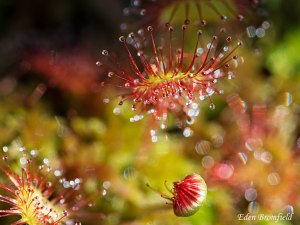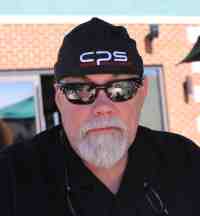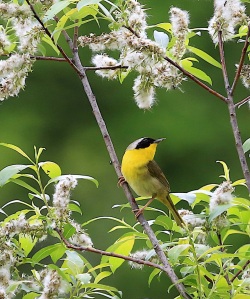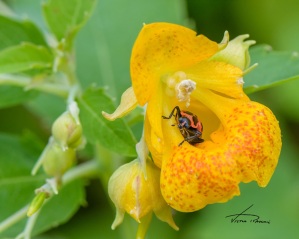Tagged: photography
Third Annual OFNC Members Photo Night
By Barry Cottam
Nine presenters turned out on a messy winter’s night, with about a dozen more folks in the audience, for our 3rd annual members photo night event. Organizers Hume Douglas and Barry Cottam had some initial concern about the low numbers, but then were kept on their toes finding time for everyone to present as much as they wished.
The room at the Neatby Building had already been set up with tables and chairs, an arrangement we decided to run with. It worked well, giving people more opportunity to meet each other and share comments on the presentations. The evening began with new member Mary Ann Perron’s presentation on her research on dragonflies, supported by the OFNC under its new science research grant program. She produced some fascinating photos of dragonflies emerging, with various degrees of success, from their exuviae, and explained the value of dragonflies as monitors of water-way health. Owen Clarkin, OFNC’s resident expert on trees, shared his enthusiasm for the capabilities of his new point and shoot camera that enabled him to take identification-confirming photos on land that would otherwise be inaccessible.
Barry Cottam continued with the entomology theme, presenting on biodiversity in small spaces. He described a happy afternoon photographing insects on and around a single stump found behind his room at Wildsumaco Bird Lodge in Napo Province, Ecuador.
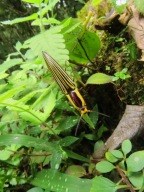
Semiotus superbus, by Barry Cottam
Jeewa Mendis brought us back to Canada with a series of short videos of local wildlife, including a family of four friendly skunks denning in her backyard. She ended with a video teaser, shot in Sri Lanka, for her presentation on March 19 at the FWG. Eden Bromfield took us on rambles from the Ottawa River to a Yukon national park to the Gaspe; his work emphasizes the play of light on ice and flowing waters and his keen interest in local flora.
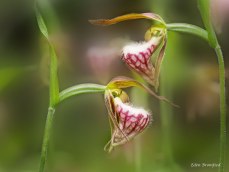
Ram’s Head Lady Slipper Orchid, by Eden Bromfield
We returned to the north, this time to James Bay with Rick Cavasin on his search for northern species of butterflies; his trip included a walk to Nunavut. (You had to be there!) Gordon Robertson gave us an entertaining overview of the fauna of the Galapagos Islands, seen on a boat tour that included all the islands. Gord Belyea had stories about bird encounters in Florida and Texas. He has a special interest in finding banded birds then reporting his findings to the sometimes elusive scientists who banded them, an important contribution to citizen science. The evening closed with several photos presented by Lorne Peterson, who introduced us to the concept of ‘equinoxing.’ Lorne explained that he saw the spring and fall equinoxes as processes by which light is shared locally and globally, from his backyard to the world itself.
And so another members photo night was filled with the varied interests and ideas of OFNC members, expressed through their combined love of nature and photography. It was after 10 by the time the organizers had finished up, worries about low numbers forgotten, happily looking forward to 2017.
Butterfly Hunting in the National Capital Region
By Richard Singhroy
Richard Singhroy is a 2nd-year environmental studies student at the University of Ottawa. This fall, he is volunteering with the OFNC through the Community Service Learning program.
On Tuesday, October 13, at the Central Experimental Farm’s K.W. Neatby Building, 960 Carling Avenue, Rick Cavasin gave an in-depth presentation on the butterflies and butterfly habitats of the Ottawa region. Rick is a butterfly enthusiast and an expert butterfly photographer whose images have appeared in many publications, including the new ROM Field Guide to Butterflies of Ontario. For those in attendance, this was a fantastic opportunity to learn about butterflies in our region.
The main part of Rick’s presentation comprised a depiction of the five families of butterflies found in the Ottawa region, as well as a description of the many different sites where butterflies can be found, such as Luskville Falls, Constance Bay, Mer Bleue, and Larose Forest, to just name a few.
Each species has its own habitat requirements that will dictate where it can be found. For example, the Bog Copper is specific to bog habitat, such as Alfred Bog and Mer Bleue, whereas the more generalist Northern Crescent can be found at a range of Ottawa sites. Some habitats, such as dense forests, are generally less favorable to most butterfly species. Forest edges and open meadow and grassland areas are great places to start your butterfly hunt.
This was also a great presentation for anyone who wants to start photographing butterflies, as Rick provided many useful tips. For example, he recommended turning off your flash, using a macro lens if possible, and not using a tripod (by the time your tripod is set up, the butterfly will usually have moved on). Rather than recommending a specific type of camera, Rick stressed that it is more important to know how to use your current camera properly. A fancy DSLR or a point-and-shoot can both take wonderful butterfly pictures. If you’d like to keep track of your findings and photographs, then check out the citizen science project e-Butterfly.
Rick also talked about how some butterflies in our region are in serious decline. One example is the Mottled Duskywing (photo above right). Most of its colonies have been built over, and the remaining sites are also at risk of development. If something is not done to stop the habitat destruction, then this butterfly will disappear from the Ottawa region.
This was an eye-opening presentation. I never knew that there are so many different types of butterflies in the Ottawa region. For more information on butterflies visit Rick’s personal web site, Butterflies of Ontario and the Ontario Butterfly Atlas online.
Second annual OFNC members’ photo night
By Claire Elliott and Barry Cottam
On Saturday evening, January 17, Barry Cottam and Hume Douglas hosted the second annual OFNC Member’s Photo Night. To accommodate the growing popularity of this event, the meeting was held at the Central Experimental Farm’s Neatby Building, the location of the OFNC monthly meetings.
Fourteen club photographers presented to a group of a couple of dozen onlookers. The emergent theme of the night seemed to be naturalists on vacation, as there were many wonderful photos from all over North America. However, the natural history of the Ottawa region was also well represented.
Starting in the south, Hugh Metcalfe introduced us to the many birds he encountered during his work as a bird surveyor in Florida and Mississippi. Suzanne Deschệnes also showed pictures from this region, all from 25 of Florida’s 27 National Wildlife Refuges. The first butterfly presentation of the night came from Gillian Marston, who visited Mission, Texas, for the Butterfly Festival held during fall butterfly migration. Heading east, Barry Cottam introduced us to the many wonderful insects of rural eastern Prince Edward Island.
Traveling west across the continent, our resident butterfly expert Rick Cavasin (see Butterflies of Ontario) took us on a second butterfly tour of Idaho, Colorado, Nevada, and Wyoming, while Gordon Belyea presented his lifer birds from a trip to Arizona and New Mexico. From Vancouver we saw beautiful western trees with Lorne Peterson. And in the north, Eden Bromfield combined scenes of the beauty of ice and snow with his interest in rare flora, and Claire Elliott exhibited an inventory of the flora and fauna of the Barrenlands in the Northwest Territories.
The photos taken in the Ottawa region showed the amazing diversity of our local natural history. The first presenter of the night, Dale Poulter, captured our attention with a wonderful display of caterpillar diversity, seen around her home in Perth. Victor Rakmil then presented a series of portraits entitled “Animals with Attitude.” Local flora were well represented by Brian Carson and his study on Trillium colour variants and by Josh McCullough’s artistic macro and landscape shots. Lastly, Diane Lepage, who was recently featured in a member profile, took us on a broad tour of our local fauna, focusing on insects she’d never seen before.
Thanks to Barry and Hume for organizing this event for a second year, to all of the photographers for sharing their beautiful photos, and to the audience for giving their support. We look forward to the 2016 photo night!
Member profile – Stewart Curry
Members of the Ottawa Field-Naturalists’ Club are as diverse as the taxa they study; from birders to botanists, highschool students to university professors, backyard garden admirers to conservation officers. The OFNC blog will be featuring profiles of members to showcase the incredible array of natural history enthusiasts. Whether you’ve just joined or are a lifetime member, please contact ottawaofnc@gmail.com if you’d like to share your natural history story!
Birdman
By Stewart Curry
For as long as I can remember I’ve had a passion for photography. Whenever I am awake, I want to be outside with my camera. It started when I received my first Brownie box camera for my tenth birthday. Before I had snapped my first still, curiosity got the best of me and I took that camera apart piece by piece, never managing to put it back together again. Seeing how that shutter worked filled me with wonder at the mechanical wizardry of image capture.
Not long after, on what I still think of as my best Christmas Day ever, my parents gave me my first 35mm rangefinder camera. My father made sure my new camera had full manual control over shutter speed and aperture and not just the programmed automatic mode we all know today. He knew that my best shot at making great photographs was to build a detailed understanding of the whole process. There was no turning back.
I took some great photographs with that little camera, shots I remember vividly to this day. Eventually, seeking even greater control of the art, I saved up and headed with my father to Mendelsohn’s Pawn Shop on Craig Street in Montréal. There I traded in my rangefinder for (somebody’s) Minolta SRT-101 SLR. With the trade it set me back $80 — big bucks for a 12 year old. At last I felt like a grown-up.
Day after day, I spent hour after hour in fields and forests just minutes from my parents’ house in Pierrefonds, near Rivière des Prairies at the northwestern limit of the Island of Montréal. While most kids were racing their bikes with baseball cards whirring in the spokes, I was out examining landscapes — sun dappled havens filled with endless species of birds, trees, lichens, and beetles, and endless arrays of plants and flowers, spectacular in their tangled waves of colour. I knew nothing about nature other than that these things were beautiful.
That blossoming passion for photography lasted for decades, leading me in my 20th year to the Dawson Institute of Photography in Montréal where my world of photography exploded outward with access to the world’s best gear under the guidance of seasoned experts. But eventually, the daily pressures of work and family allowed me less and less time to pursue my leisurely first love. Then, with the advent of digital photography, my passion seemed to dwindle right into oblivion. I simply could not imagine a world of photography without my prized Kodachrome slide film. I was a dinosaur that just couldn’t fit in to the new digital world. Despondent, I sold all my gear.
I had stopped but nature rolled on. Some years later, as my wife and I discovered the simple pleasures of hiking and kayaking and skiing and snowshoeing, the fields and forests once again seemed to come alive with tiny expressions of unstoppable and inexpressible life — creatures and views that cried to have their pictures taken. Everywhere I looked, I saw an opportunity to record a miracle.
Twelve months ago I acquired a DSLR and there has been no turning back. My wife and I now head out on most weekends with our cameras, and over the past year I have taken over 10,000 images. Birds have become one of our favourite subjects. Given our new fascination, we have bumped into many self-declared birders. We thought them quite odd at first, running around as they do with their Tilly hats, binoculars and notepads. But we quickly became aware of how little we knew about what we were photographing. So we invested in a Birds of Canada guide and started identifying (or at least trying to) each bird we photograph. Our knowledge has added a new depth to our pastime.
Mind you, I couldn’t care less if the bird in my viewfinder is a rare visitor or a common pest. My passion remains the photography itself; my only desire is to capture the beauty and magnificence that I see every day in our surroundings. I’m a birder on a mission. Coming at birds from a different direction than most, I know I have much to learn about bird life but plenty to offer about putting those critters on “film.” If you need any tips on capturing fabulous images with whatever camera equipment you have, just look for me in the woods. I’ll be the big bald guy flipping through the bird book and scratching his head.
All photos taken by Stewart Curry with a Canon 5D Mark lll and Canon EF L 100-400 zoom.
Stewart will be leading the “Getting to know your DSLR” photography workshop on Sunday, July 27th (9 am-2 pm) at the Fletcher Wildlife Garden Interpretive Centre, more information at www.ofnc.ca!
Many ways of seeing nature: OFNC members’ photo night
By Barry Cottam
On January 18th at the Fletcher Wildlife Garden (FWG) interpretive centre, at least a couple dozen people came out for the OFNC members’ photography night, hosted by Hume Douglas and Barry Cottam. Eleven presenters took us to locations near and far in a nice mix of exotic and local that proved to be a perfect photographic pot luck.
We were treated to terrific views of the birds of New Zealand and Australia by Barbara Chouinard and several national parks in Tanzania by Fan Song. Claire Elliott unveiled the flora and fauna of the Barren Lands in the Northwest Territories with photos taken on a research trip. Rick Cavasin took us around the Gaspé in search of butterflies.
The Club’s 50-km catchment area and beyond was well represented, with Joshua McCullough featuring scenic shots from various places within it as well as from the Barron Canyon in Algonquin Park (see Joshua McCullough Fine Art). Moth expert Diane Lepage and other presenters focused on more local spots, including Larose Forest, Alfred Bog, and Purdon Fen. The hours Victor Rakmil spends in the FWG’s Backyard Garden resulted in photos of insects (see Rakmil Photography), and Barry showed photos of several of the many insects he is recording in his backyard.
Topics ranged from the scenic to megafauna, caribou especially, to birds, insects, trees – thanks to tree enthusiast Owen Clarkin – and small, rare, hard-to-find flowers, Eden Bromfield’s preferred subjects, which he catalogues by their appearance through the seasons. Natalie Sopinka had a change of plans and couldn’t make the event, but we enjoyed her fascinating photos of Pacific salmon, the subjects of her PhD research at the University of British Columbia.
Presentations were well received, with frequent questions and comments and much friendly buzz among the presenters and audience members throughout the evening. We learned about the natural world and the many ways and places it can be seen and appreciated. The evening ended with close-up views of individual snowflakes, taken outdoors by Barbara Robertson – an unusual challenge well-met and an appropriate send-off for us all on a winter’s eve.
A special thanks to the organizing host team and to Barbara Chouinard (OFNC Events Committee) who pleasantly surprised the group with drinks and snacks. Given the enthusiastic response, no doubt the club will be hosting this event again – watch for it!
In the meantime, check out a sample of the photographs presented at the photography night in the gallery below.

